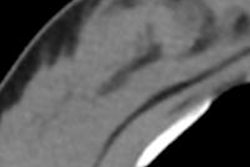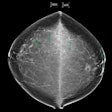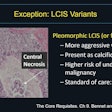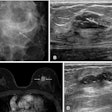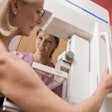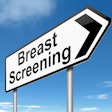The finding is good news, since using synthetic 2D mammograms reduces the radiation dose delivered during tomo exams, making it a more attractive alternative for breast cancer screening.
Dr. Luisa Wallace, from the University of Pittsburgh, and colleagues selected 123 cases regarded as challenging by two independent reviewers from the university's research database. The cases included 36 biopsy-verified cancers, 35 biopsy-proven benign lesions, and 52 recalled screening exams proved to be normal on recall and one year follow-up.
Five radiologists reviewed each study twice: once with the synthetic 2D data and then tomosynthesis, and once with the standard FFDM mammogram and then tomosynthesis. Probability of malignancy was scored on a 100-point scale, and BI-RADS scores were recorded for each study as well. Wallace's group then analyzed the data based on area under the receiver operator characteristics curve (AUC), with 0.90-1.0 equal to excellent accuracy, 0.80-0.90 equal to good, 0.70-0.80 equal to fair, 0.60-0.70 equal to poor, and 0.50-0.60 equal to failure.
The researchers found that the average AUC for FFDM plus tomosynthesis was 0.89, while AUC for the synthetic 2D image plus tomosynthesis was 0.87. They concluded that synthetic 2D mammograms with tomosynthesis show promise as an alternative to conventional FFDM mammography and tomosynthesis for breast cancer screening.






